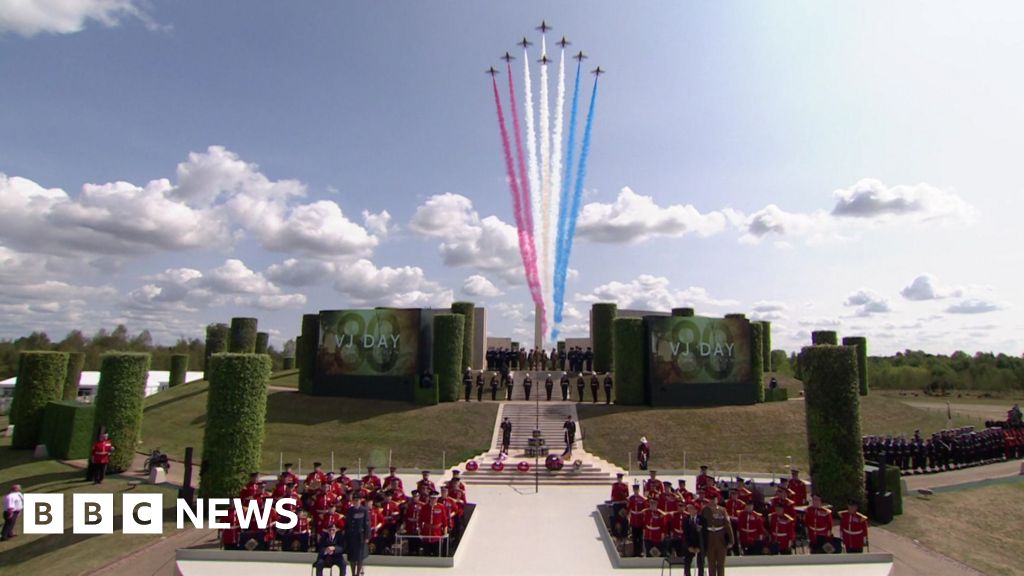Understanding the Difference Between Budget and Forecast for Better Planning

When you think about financial planning, it’s crucial to understand the difference between a budget and a forecast. A budget is a fixed financial plan that outlines specific revenue and expense targets for a set period, often a year. Conversely, a forecast is a more flexible estimate that predicts future financial performance based on past data and current trends. Knowing when to apply each can greatly impact your decision-making and resource allocation. What implications does this have for your financial strategy?
Key Takeaways

- Budgets set specific financial targets for a fixed period, while forecasts estimate expected performance based on historical data and market conditions.
- Budgets are static and reviewed annually, whereas forecasts are dynamic and updated regularly to reflect real-time performance.
- Budgeting focuses on controlling expenses and revenue targets, while forecasting provides strategic insights for informed decision-making.
- Budgets serve as a roadmap for financial management, while forecasts assess the likelihood of meeting financial goals.
- Effective financial management involves using budgets for resource allocation and forecasts for timely adjustments based on current data.
Understanding Budgeting

When you comprehend budgeting, you recognize it as a structured process that estimates a company’s revenues and expenses over a defined period, usually one year.
A budget outlines specific targets for cash flows, expenses, and revenues, helping you set financial goals and limits for spending.
It’s crucial to involve multiple departments in the budgeting process to guarantee accuracy and promote ownership among stakeholders.
You often compare actual performance against budgeted figures to conduct variance analysis, which identifies areas for improvement.
This comparison highlights the difference between budget and forecast, as budgets remain static once established, requiring periodic re-evaluation to adapt to changing market conditions.
Grasping these concepts clarifies the budget vs forecast vs actual dynamic for better financial management.
Understanding Financial Forecasting

Financial forecasting plays an essential role in strategic planning, as it helps businesses anticipate future financial performance based on a combination of historical data, market conditions, and growth objectives.
Typically covering short-term periods of months or long-term spans of up to five years, forecasts are dynamic tools that require regular updates. By relying on current financial reports and adjusting for operational changes, these forecasts provide a thorough view of your business’s performance across profit and loss, cash flow, and balance sheet statements.
Analyzing past trends allows you to make informed decisions about resource allocation and strategic direction. Accurate forecasting hinges on documenting critical data, such as cash flow and income statements, which serve as the foundation for predicting future outcomes.
Key Differences Between Budgeting and Forecasting

When you look at budgeting and forecasting, you’ll notice key differences in purpose and focus.
Budgets are all about setting specific financial targets and managing expenses over a set period, like a year, whereas forecasts give you a broader view of expected financial performance based on past data and market trends.
Furthermore, budgets are typically static and reviewed annually, but forecasts can be adjusted regularly, ensuring you’re always aligned with changing circumstances.
Purpose and Focus
Comprehending the purpose and focus of budgeting and forecasting is essential for effective financial management.
Budgets set specific financial goals and allocate resources, concentrating on planned revenues and expenses for a fixed period, typically one year. Conversely, forecasts are dynamic, analyzing current financial data and historical trends to project future performance, often updated monthly.
Here are key differences in purpose and focus:
- Budgets control expenses and enforce financial discipline.
- Forecasts inform strategic decision-making based on real-time data.
- Budgets provide a roadmap for managing cash flow.
- Forecasts assess the likelihood of meeting budgeted goals.
- Budgets are static, whereas forecasts are flexible and can adapt to market changes.
Understanding these distinctions helps you navigate financial planning effectively.
Time Frame Differences
Comprehending the time frame differences between budgeting and forecasting is crucial for effective financial planning. Budgets typically cover a fixed period, often one fiscal year, and remain static once established. Conversely, forecasts can span shorter or longer time frames and are frequently updated, usually monthly or quarterly, to reflect current market conditions. Meanwhile, budgets set specific financial goals for a defined period, forecasts provide ongoing estimates of expected performance. Budgets are often created at the beginning of a fiscal year, whereas forecasts adapt to new data, allowing for flexibility.
| Aspect | Budget |
|---|---|
| Time Frame | Fixed, usually 1 year |
| Updates | Rarely revised |
| Goals | Specific financial targets |
| Adaptability | Static |
| Frequency of Review | Annually |
Level of Detail in Budgets and Forecasts

When you’re looking at budgets and forecasts, you’ll notice a key difference in their level of detail.
Budgets are all about precision, setting fixed targets for revenue and expenses, whereas forecasts offer broader, dynamic estimates that can change as market conditions shift.
This distinction is essential, as budgets usually focus on short-term objectives, whereas forecasts tend to emphasize long-term trends and expectations.
Budget Precision vs. Forecast Generalization
Comprehending the differences between budget precision and forecast generalization is essential for effective financial planning.
Budgets serve as detailed financial plans with specific targets for revenue, expenses, and cash flow over a set period, typically a year. Conversely, forecasts provide broader estimates that consider historical data and current trends, often covering multiple years.
This distinction affects how you approach financial management:
- Budgets focus on concrete spending limits.
- Forecasts adapt to real-time market changes.
- Budgets allow for in-depth variance analysis.
- Forecasts summarize major revenue and expense categories.
- Budgets can set unattainable targets, whereas forecasts remain flexible.
Fixed Targets vs. Dynamic Estimates
Grasping the distinction between fixed targets and dynamic estimates is crucial for effective financial management. Budgets establish fixed targets for revenue and expenses, detailing specific allocations for a year. They help you set precise goals and limits, ensuring you stay within defined spending parameters.
Conversely, forecasts represent dynamic estimates that predict future financial outcomes based on historical data and current market trends. Unlike budgets, forecasts can be updated regularly, allowing you to adjust expectations as business conditions change.
Whereas budgets provide a granular view of financial planning, forecasts offer a broader perspective, summarizing major categories without intricate details. Comprehending these differences enables you to manage resources effectively and respond proactively to shifting circumstances.
Short-term vs. Long-term Focus
Shifting focus from the differences between fixed targets and dynamic estimates, it’s important to understand how budgets and forecasts serve different timeframes and levels of detail.
Budgets typically target short-term goals, detailing financial estimates for a fixed period like a fiscal year. Conversely, forecasts cover both short-term and long-term projections, spanning one to five years or more.
- Budgets set specific revenue targets and expense limits.
- Forecasts provide broader estimates and trends.
- Budgets are static and fixed once established.
- Forecasts are dynamic, updated regularly.
- Short-term budgets guide immediate financial decisions whereas long-term forecasts support strategic planning.
Time Frames for Budgets and Forecasts

Comprehending the time frames for budgets and forecasts is crucial for effective financial planning.
Budgets typically cover a fixed period, usually one year, where you set specific financial goals and allocate resources accordingly. Conversely, forecasts can extend over both short-term periods, like monthly or quarterly, and long-term spans, reaching up to five years.
This flexibility allows you to adjust forecasts regularly based on current data and market conditions, making them dynamic. Although the budgeting process usually happens annually, forecasting is a continuous activity that requires regular reviews and updates.
Budgets focus on setting expense limits and financial targets, whereas forecasts provide a broader view of expected business performance over varying time frames, aiding strategic planning.
Purpose of Budgeting vs. Forecasting

When you think about budgeting, consider it a tool for financial control, setting clear revenue and expense targets for your organization.
Conversely, forecasting helps you gain strategic insight by predicting future performance based on historical data and current trends.
Together, these practices not just establish financial boundaries but additionally enable you to adapt your strategies based on changing conditions.
Budgeting for Financial Control
Effective financial management hinges on the careful distinction between budgeting and forecasting, both of which play crucial roles in guiding an organization’s fiscal strategy.
Budgeting focuses on creating a structured financial plan, outlining expected revenues, expenses, and cash flows for a specific period. This allows you to allocate resources effectively and maintain financial control.
Here are some key aspects of budgeting:
- Establishes specific financial goals and limits
- Focuses on managing spending to meet predefined targets
- Typically remains static once set
- Provides a roadmap for resource allocation
- Assesses the likelihood of achieving budgeted goals through forecasting
Understanding these differences helps guarantee that you use budgeting to maintain control during setting the foundation for future financial planning.
Forecasting for Strategic Insight
Although grasping the distinction between budgeting and forecasting is vital for financial management, recognizing how forecasting provides strategic insight can greatly improve your decision-making process.
Forecasting analyzes historical data and market trends, giving you a dynamic view of expected financial outcomes. This allows you to adjust strategies based on current conditions.
https://www.youtube.com/watch?v=9uFKAwIa3V0
Unlike budgets, which establish specific financial goals for a set period, forecasts focus on predicting future performance and market shifts, facilitating proactive decision-making. Regular updates based on real-time data help highlight risks and opportunities, enabling informed adjustments in operations and resource allocation.
While both budgeting and forecasting are fundamental, forecasting offers a broader perspective on business performance, enhancing your ability to align with strategic goals effectively.
Flexibility and Adaptability

Flexibility and adaptability are essential in financial planning, especially when comparing budgets and forecasts. Budgets tend to be static, making them less responsive to changing market conditions. Conversely, forecasts are dynamic and can be updated regularly to reflect real-time data. This adaptability allows you to avoid unattainable goals that rigid budgets might impose.
Here are some key points to take into account:
- Budgets are set for a specific period, usually a fiscal year.
- Forecasts can be revised monthly or quarterly based on current performance.
- Flexibility in budgeting helps you address unexpected challenges.
- Integrating both tools improves overall adaptability.
- Regularly revisiting budgets guarantees alignment with operational changes.
Advantages of Budgeting

Budgeting gives you crucial control over your finances by providing a structured plan for managing expenses and resources.
It additionally allows you to measure performance effectively, as you can compare actual results against your budgeted figures to identify areas for improvement.
Financial Control and Planning
Effective financial control and planning rely heavily on the advantages that budgeting brings to an organization. By implementing a budget, you encourage management to closely examine financial activities, which promotes accountability and improves resource allocation decisions.
Budgeting documents cash sources and uses, allowing for more precise cash flow anticipation, vital for maintaining financial stability. Involving cross-functional stakeholders in the budgeting process nurtures ownership and motivation, driving the team to meet financial targets.
Furthermore, regular variance analysis gives real-time insights into performance, enabling timely adjustments. Finally, budgeting clearly defines roles and responsibilities, ensuring everyone understands their contributions to achieving financial goals.
- Encourages accountability among management
- Improves decision-making regarding resources
- Provides accurate cash flow projections
- Promotes team ownership and motivation
- Clarifies roles and responsibilities
Performance Measurement and Analysis
Performance measurement and analysis are crucial components of any organization’s financial strategy, especially regarding leveraging the advantages of budgeting. By regularly comparing actual results to budgeted figures, you can assess performance and identify discrepancies in financial management. This process encourages accountability among departments, promoting ownership and motivation in achieving targets.
Here’s a quick look at the advantages of budgeting:
| Advantage | Description | Impact |
|---|---|---|
| Variance Analysis | Compares actual vs. budgeted results | Identifies performance gaps |
| Accountability | Sets clear financial goals for departments | Increases collaboration |
| Improved Decision-Making | Evaluates expenses and revenues critically | Augments cash flow planning |
Through these practices, you can quickly adapt to financial challenges and seize opportunities, ensuring your organization remains responsive to market conditions.
Resource Allocation Efficiency
Comprehending how to allocate resources efficiently can greatly influence an organization’s financial performance.
Budgeting acts as a guiding framework, ensuring funds are utilized effectively and aligned with organizational goals. By setting spending limits, you can prevent overspending and encourage departments to operate within their means.
- Management must examine financial activities closely.
- Regular variance analysis helps identify inefficiencies.
- Cross-functional team involvement increases accountability.
- A structured budget improves strategic decision-making.
- Budgets allow for quick adjustments to financial challenges.
Advantages of Financial Forecasting

Financial forecasting serves as a crucial tool for businesses, offering significant advantages that can improve overall operational effectiveness. By providing a thorough view of your business performance through profit and loss statements, cash flow, and balance sheets, you can make more informed decisions.
Longer time frames in forecasts allow you to analyze monthly trends and make necessary adjustments proactively. Regular updates improve your management effectiveness, giving you timely insights based on real-time financial performance.
Moreover, forecasting helps identify potential opportunities and risks early, allowing you to adjust your business strategy accordingly. This all-encompassing approach considers all elements of your business model, supporting informed planning and encouraging growth beyond just revenues and expenses.
Steps of Financial Forecasting

When starting on financial forecasting, it’s crucial to begin by establishing a specific time frame that suits your business needs, whether that’s a short-term projection spanning a few months or a long-term outlook extending up to five years.
Once you’ve set the time frame, follow these steps:
- Gather historical financial documents like cash flow statements and income statements.
- Document critical data points to analyze financial performance regularly.
- Adjust forecasts based on real-time results and operational changes.
- Continuously monitor and update forecasts monthly or quarterly.
- Use insights from forecasting to inform budgeting decisions, ensuring alignment with future performance.
What Comes First: Budget or Forecast?

In the domain of financial management, comprehension of the sequence of budgeting and forecasting is key to effective planning. Typically, you’ll start with the budgeting process as it establishes your financial goals and allocates resources for the upcoming period. A budget quantifies expected revenues and expenses based on historical data, which sets a framework for your financial planning. After creating a budget, you’ll perform financial forecasting to estimate likely outcomes based on the assumptions made earlier.
| Aspect | Budget | Forecast |
|---|---|---|
| Purpose | Establish financial goals | Estimate financial outcomes |
| Nature | Static, reviewed annually | Dynamic, updated regularly |
| Basis | Historical data | Assumptions from the budget |
How a Budget Supports Financial Planning

A budget acts as a crucial tool for supporting financial planning by clearly outlining expected revenues and expenses for a specific period, usually one year. It sets clear financial goals and helps you manage resources effectively. By doing so, you can anticipate cash flow needs and maintain financial health throughout the budgeting period.
Here are some key benefits of having a budget:
- Specifies resource allocation and spending limits
- Enables regular comparison of actual results against budgeted figures
- Identifies variances and assesses performance
- Cultivates cross-functional collaboration and ownership among team members
- Provides a framework for strategic decision-making and proactive responses to financial challenges
Utilizing a budget improves your ability to navigate financial intricacies and achieve your organization’s objectives.
Tools for Effective Budgeting and Forecasting

Effective budgeting and forecasting tools are essential for any organization aiming to achieve financial stability and growth. Financial forecasting software, like LivePlan, automates the forecasting process, allowing you to create guided forecasts and generate automatic financial statements. Using templates for sales and cash flow forecasts can simplify your budgeting process, providing a structured approach. Modern financial planning and analysis (FP&A) platforms improve collaboration among finance teams by integrating data from various systems. Regular updates to these tools are necessary to adapt to changing market conditions, ensuring informed financial decisions. Here’s a quick comparison of effective tools:
| Tool Type | Features | Benefits |
|---|---|---|
| Financial Software | Automation, guided forecasts | Reduces manual efforts |
| Templates | Structured formats | Simplifies forecasting |
| FP&A Platforms | Data integration | Improves collaboration |
| Tech Solutions | Accuracy, efficiency | Addresses common challenges |
Recommendations for Balancing Budgeting and Forecasting
Balancing budgeting and forecasting is crucial for effective financial management, especially since both processes serve unique yet complementary purposes.
To achieve this balance, consider implementing the following recommendations:
- Use budgets for clear resource allocation as you utilize forecasts for real-time adjustments.
- Regularly update financial forecasts to respond swiftly to market changes and operational shifts.
- Involve cross-functional stakeholders in the budgeting process to improve ownership and motivation.
- Differentiate between vital and discretionary expenses during budgeting to prioritize spending effectively.
- Create multiple forecasting scenarios—optimistic, pessimistic, and most likely—to prepare for various outcomes.
Conclusion
In conclusion, grasping the difference between budgets and forecasts is essential for effective financial management. Budgets provide a fixed plan with specific targets, whereas forecasts offer flexible projections based on evolving data. By recognizing these distinctions, you can better allocate resources, monitor performance, and adapt strategies as needed. Utilizing appropriate tools and methods for both can improve your organization’s financial planning and decision-making processes, ensuring you remain on track to meet your objectives as you respond to changing conditions.
Image Via Envato
Image Via Envato
This article, "Understanding the Difference Between Budget and Forecast for Better Planning" was first published on Small Business Trends
What's Your Reaction?
 Like
0
Like
0
 Dislike
0
Dislike
0
 Love
0
Love
0
 Funny
0
Funny
0
 Angry
0
Angry
0
 Sad
0
Sad
0
 Wow
0
Wow
0































































![Kansas City Chiefs Have Taylor Swift, Here Is Every NFL Team’s Celebrity Muse [Part 2]](https://thechive.com/wp-content/uploads/2025/08/lead_9a6ac8.jpg?attachment_cache_bust=5072985&quality=85&strip=info#)

![Kansas City Chiefs Have Taylor Swift, Here Is Every NFL Team’s Celebrity Muse [Part 1]](https://thechive.com/wp-content/uploads/2025/08/lead_e9029f.jpg?attachment_cache_bust=5072647&quality=85&strip=info#)




























